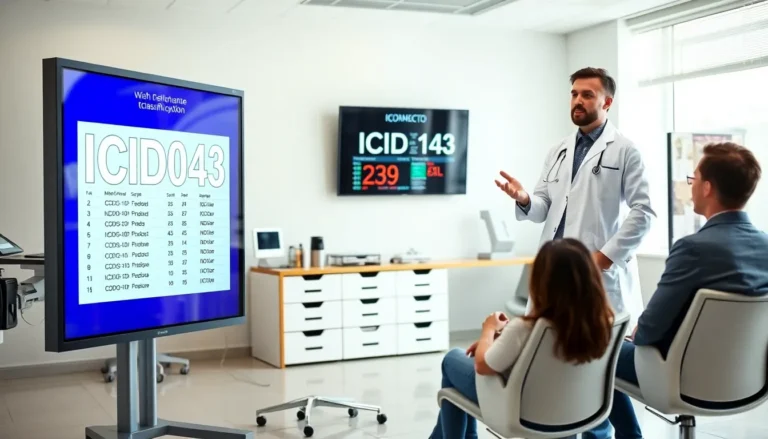Table of Contents
ToggleIn the fast-paced world of education, teachers juggle lesson plans, grading, and the occasional paper airplane flying across the classroom. Amidst this chaos, the need for effective feedback has never been more critical. Enter teacher feedback apps—those magical little tools that transform scribbled notes into actionable insights. They’re like having a personal assistant who never asks for coffee breaks!
Overview of Teacher Feedback Apps
Teacher feedback apps serve crucial functions in educational settings. These digital tools enable educators to record, organize, and analyze feedback on student performance efficiently. Various applications include features that facilitate real-time communication, enhancing student-teacher interactions.
Many apps provide customizable templates for feedback, saving teachers time on creating standardized messages. Collection and analysis of feedback are streamlined, allowing educators to focus more on individualized instruction. User-friendly interfaces make navigation intuitive, ensuring teachers can easily adopt these technologies without extensive training.
Data analytics play a significant role in some of these applications. By tracking trends over time, teachers gain insights into student progress and areas needing improvement. Personalized feedback options ensure that responses are tailored to each student’s unique learning style.
Popular teacher feedback apps include ClassTag, Seesaw, and Google Classroom. Each of these platforms offers unique features that cater to different teaching approaches and classroom needs. Integration capabilities with existing school systems further enhance their usability, promoting seamless transitions between platforms.
Engagement tools such as surveys or polls allow educators to gather student opinions effectively. Feedback from students can guide instructional adjustments and curriculum choices, thereby fostering a collaborative learning environment. Such interactions often lead to increased motivation and satisfaction among learners.
Teacher feedback apps significantly improve the efficiency of the feedback process. Their various features address essential aspects of classroom communication and engagement, enriching the educational experience.
Key Features of Teacher Feedback Apps
Teacher feedback apps include various features that enhance the educational experience. These functions improve efficiency and effectiveness in delivering feedback.
User Interface and Experience
User interfaces play a critical role in teacher feedback apps. Intuitive designs allow educators to navigate easily without frustration. Modern visuals and simplified layouts enhance user engagement and satisfaction. Responsive design ensures accessibility on multiple devices, accommodating teachers’ needs. These features create a more enjoyable user experience, allowing teachers to focus on feedback rather than technology.
Integration with Learning Management Systems
Integration capabilities with Learning Management Systems (LMS) significantly boost teacher feedback apps. Linked systems allow seamless data transfer, streamlining the feedback process. Many apps connect directly with popular LMS platforms like Canvas or Blackboard. This connection facilitates real-time updates and consistent communication. Automated syncing reduces data entry errors, making feedback collection more efficient. Overall, integration enhances the usability of feedback apps in various educational settings.
Benefits of Teacher Feedback Apps
Teacher feedback apps streamline communication between educators and students, enhancing clarity and ensuring timely engagement. These digital tools foster a collaborative environment within the classroom.
Enhanced Communication
Effective communication plays a crucial role in education. Teacher feedback apps enable educators to send personalized messages directly to students, fostering a more supportive learning experience. Notifications alert students to new feedback, ensuring they stay informed. Educators can also encourage parents to engage in their children’s performance, promoting a team approach to learning success. As a result, these apps bridge gaps in traditional communication methods, creating open lines of dialogue.
Real-Time Feedback
Real-time feedback significantly impacts student learning. Teachers can provide immediate insights on assignments, helping students understand their strengths and areas for growth. Instant feedback encourages a growth mindset, motivating students to improve continuously. Many apps also allow students to respond to feedback, creating a two-way communication channel that nurtures engagement. Fast turnaround times on feedback can enhance student performance, as learners receive guidance precisely when they need it, leading to more effective learning outcomes.
Popular Teacher Feedback Apps
Various apps support teachers in providing effective feedback to enhance student learning. Discover three popular teacher feedback apps that streamline communication and improve interactions.
App 1: ClassTag Features and Benefits
ClassTag offers a user-friendly platform for family engagement in education. This app includes customizable messaging, allowing teachers to send individualized updates on student progress. Built-in analytics track engagement metrics, helping educators refine their communication strategies. Moreover, ClassTag integrates seamlessly with existing school systems, enabling efficient data management. Teachers can leverage the app’s collaborative tools, such as event planning and volunteer coordination, promoting a supportive community around academics.
App 2: Seesaw Features and Benefits
Seesaw provides a dynamic digital portfolio for student work. Educators can easily collect and share assignments, allowing students to showcase their efforts. Feedback options include audio comments and text, fostering personalized interactions. Insights into student performance come via built-in analytics that identify trends and areas of improvement. Furthermore, Seesaw enables seamless parent involvement, ensuring consistent updates on student progress. This holistic approach creates a collaborative environment that benefits all stakeholders in education.
App 3: Google Classroom Features and Benefits
Google Classroom delivers a comprehensive solution for classroom management and feedback. Teachers can create assignments, collect submissions, and provide real-time feedback within the platform. Integration with Google Docs and Drive simplifies resource sharing and encourages collaborative projects. Notifications keep students informed about deadlines and feedback, promoting timely engagement. Additionally, Google Classroom’s analytic tools track student progress over time, allowing educators to identify learning gaps and adjust instruction accordingly. This streamlined approach helps maintain clarity and organization in the educational process.
Challenges in Implementing Teacher Feedback Apps
Implementing teacher feedback apps presents various challenges. Educators often encounter obstacles that can hinder adoption and effectiveness.
Resistance to Change
Resistance to change frequently stems from established routines in teaching practices. Many educators find comfort in traditional feedback methods, making transition to new technologies difficult. Reluctance often arises from anxiety about learning new systems, causing delays in integration. Support from administration plays a crucial role in encouraging acceptance of these tools. When training is offered, teachers are more likely to embrace the change. Sharing success stories from peers can also motivate educators to explore new feedback methods.
Technical Limitations
Technical limitations frequently hinder the functionality of teacher feedback apps. Connectivity issues can disrupt real-time interactions, frustrating both educators and students. Additionally, not all apps have compatibility with existing school systems, causing integration challenges. Inadequate infrastructure, such as outdated devices or slow internet, further complicates implementation. Variations in user proficiency with technology may lead to inconsistent usage among teachers. Addressing these limitations through proper support and resources is essential for maximizing app effectiveness.
Teacher feedback apps are revolutionizing the way educators communicate with students and parents. By streamlining feedback processes and enhancing real-time interactions, these tools empower teachers to focus on what truly matters—student learning and development.
With features that promote engagement and collaboration, these apps not only facilitate timely feedback but also encourage a growth mindset among students. While challenges in implementation exist, the benefits of adopting such technology are undeniable.
As education continues to evolve, embracing these innovative solutions will play a crucial role in fostering effective learning environments and improving overall educational outcomes.







